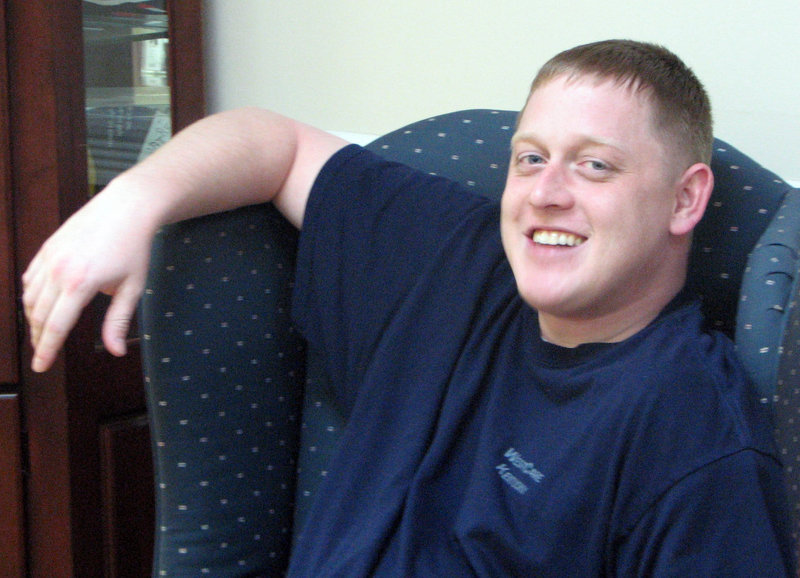LEXINGTON, Ky. — Shawn Clusky has seen every side of Kentucky’s battle with pain pill addiction over the past 10 years.
Clusky first tried OxyContin at age 17 with his school buddies, shortly after the high-powered narcotic painkiller went on the market. He was an occasional user and seller until about age 21, when he became fully addicted.
When he was 25, he got arrested at a Lexington gas station for selling $15,000 worth of pills. Clusky received probation, but was still using until he was sent to the WestCare rehabilitation center in eastern Kentucky.
He now works there as a counselor.
“A lot of times people believe a drug addict comes from poverty,” he said. Not true. “Nine out of 10 of the guys I partied with came from millionaire families. Their parents didn’t use; they had good families.”
Ten years ago, Kentucky learned it had a major drug problem.
OxyContin, a powerful prescription painkiller, was being abused at alarming rates in the Appalachian areas of eastern and southern Kentucky. A decade later, the level of pain pill abuse throughout the state and across the country is at epic levels, officials say.
Despite some successes — including several high-profile drug arrests across the country, increased treatment programs and the adoption of prescription-drug monitoring programs in 43 states — the problem is now so entrenched that the cheap flights and van rentals that drug traffickers use to travel from Florida to Kentucky and other states to peddle “hillbilly heroin” are nicknamed the “OxyContin Express.”
The sheer scope of the problem is a key reason. Kentucky often ranks at or near the top in U.S. measures of the level of prescription pain pill abuse.
According to a study by the Substance Abuse and Mental Health Services Administration, there was a fourfold increase nationally in treatment admissions for prescription pain pill abuse during the past decade. The increase spans every age, gender, race, ethnicity, education, employment level and region.
The study also shows a tripling of pain pill abuse among patients who needed treatment for dependence on opioids — prescription narcotics.
The rate of overdose-related deaths among men in Kentucky more than doubled from 2000 to 2009 and tripled among women, according to the state Cabinet for Health and Family Services.
Nearly every family in eastern Kentucky has been touched by prescription drug addiction and death.
In the late 1990s, it was easier to find OxyContin — pure oxycodone with a time release — in Kentucky. The pill’s maker, Purdue Pharma, was selling it “hand over fist” to doctors in eastern Kentucky, rich with coal mine injuries and government health care cards, said Clusky, the drug counselor.
He said a high school friend who worked at a pharmacy would steal the pills for his friends, so “it didn’t cost any of us anything.”
When many of the eastern Kentucky pill sources dried up after law enforcement raids in 2001, Clusky said, the trade moved to Mexico, where oxycodone could be bought for pennies over the counter and sold for as much as $100 a pill in the rural U.S.
Clusky began making trips to Nuevo Laredo, driving back home with thousands of pills. By this time, heroin was his drug of choice. He often traveled to larger cities, where heroin could be found more cheaply.
“Five hundred dollars worth of heroin would last me a week. Five hundred dollars worth of oxy would last me one day,” Clusky said.
He lived part time in Ohio, sometimes making three doctor-shopping trips a day from Lexington to Dayton. He did a few stints in rehab, at one point trying methadone and Suboxone to treat his opiate addiction. It didn’t work.
“I was as useless to society on methadone as I was on heroin,” he said.
Nationally, prescription drug abuse has become a front-burner issue. There are more recovery options available now than a decade ago, but many states still don’t have enough treatment available for all who need it.
Kentucky was no stranger to the abuse of prescription drugs long before federal regulators approved OxyContin in 1996. Many chronic pain sufferers said the drug helped them immensely, but abusers figured out they could crush a pill and snort or inject it, destroying the time-release function to get a whopping 12 hours’ worth of the drug in one rush.
OxyContin quickly became the drug of choice in eastern Kentucky in the late 1990s.
“You could leave a bag of cocaine on the street and no one would touch it, but leave one OxyContin in the back of an armored car and they’ll blow it up to get at it,” U.S. Attorney Joseph Famularo said at the February 2001 news conference announcing the first major roundup involving the drug.
By 2002, a quarter of the overdose deaths in the nation linked to OxyContin were in eastern Kentucky, authorities said.
Police, regulators and elected officials charged that Purdue Pharma, the Connecticut-based maker of OxyContin, marketed the drug too aggressively, feeding an oversupply and diversion onto the illicit market.
Purdue Pharma denied that, but the company and three top officials ultimately pleaded guilty in 2007 to misleading the public about the drug’s risk of addiction and paid $634.5 million in fines.
Copy the Story Link
Send questions/comments to the editors.




Success. Please wait for the page to reload. If the page does not reload within 5 seconds, please refresh the page.
Enter your email and password to access comments.
Hi, to comment on stories you must . This profile is in addition to your subscription and website login.
Already have a commenting profile? .
Invalid username/password.
Please check your email to confirm and complete your registration.
Only subscribers are eligible to post comments. Please subscribe or login first for digital access. Here’s why.
Use the form below to reset your password. When you've submitted your account email, we will send an email with a reset code.